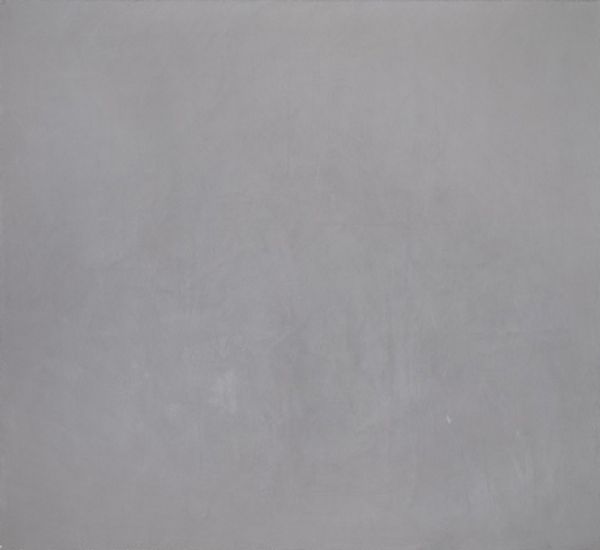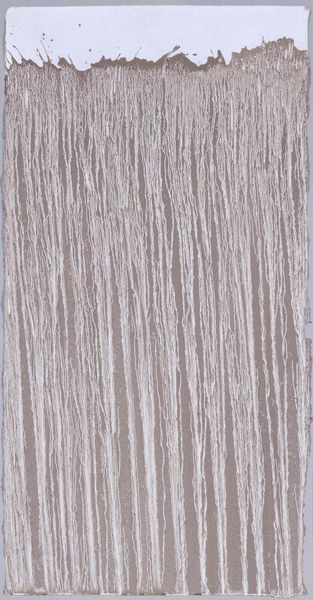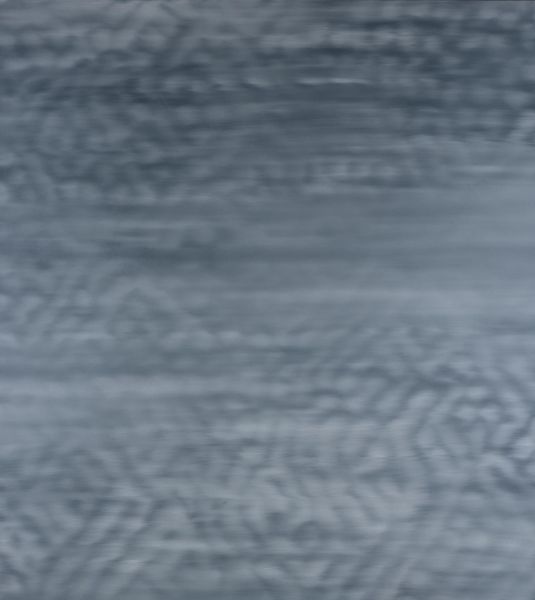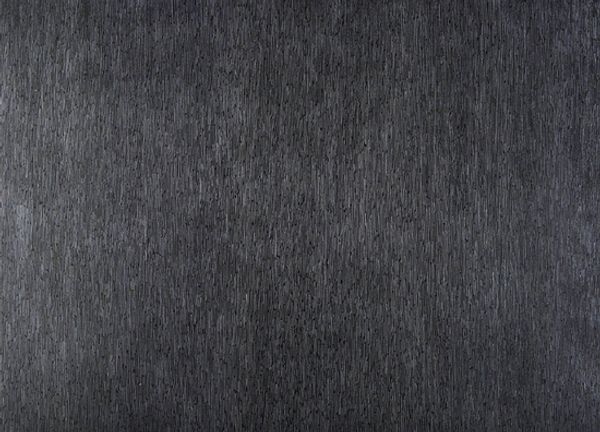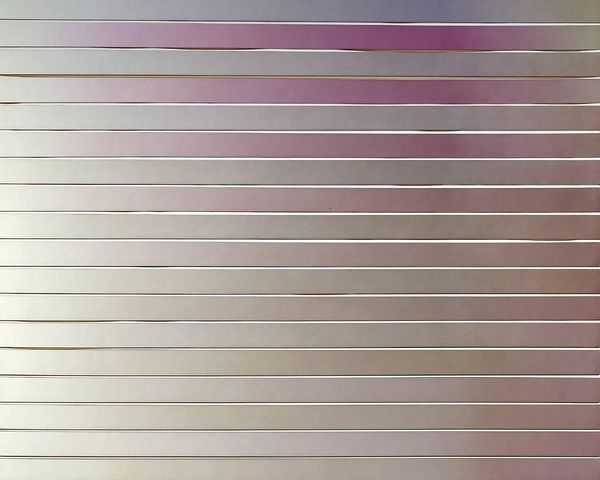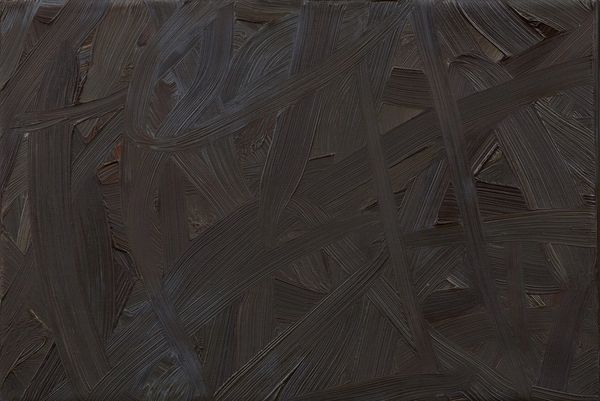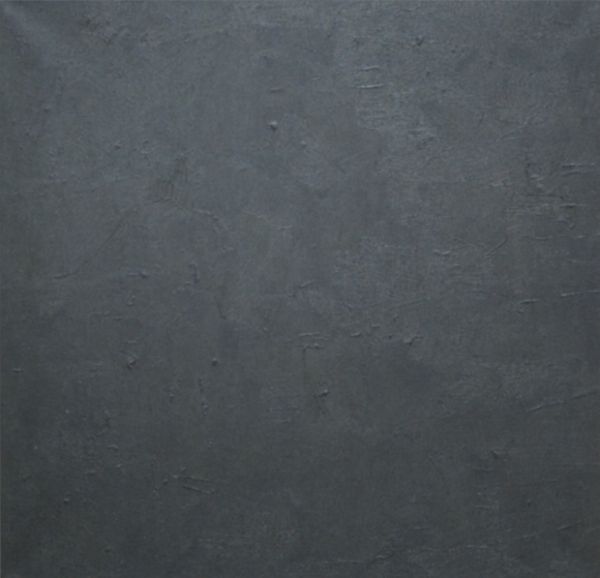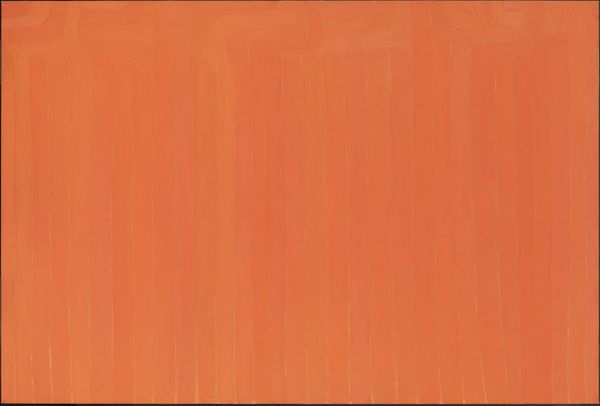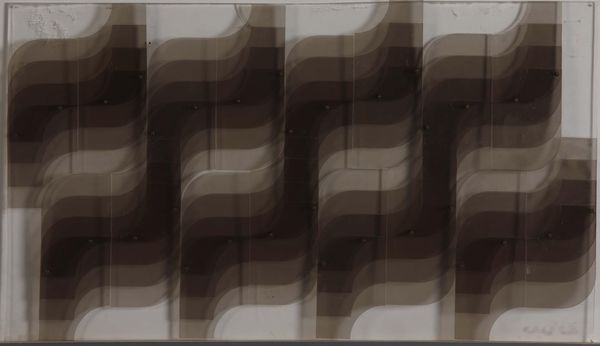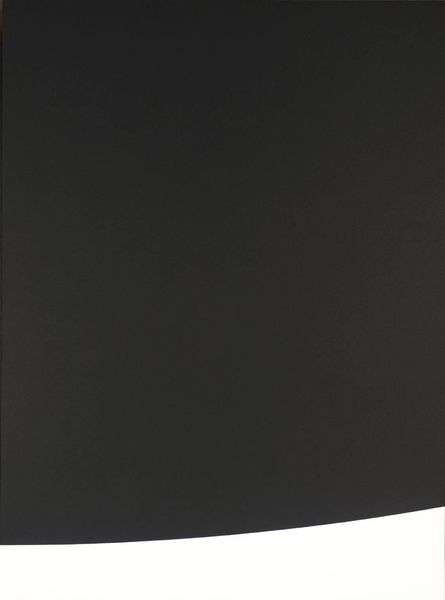
Copyright: Gene Davis,Fair Use
Editor: We're looking at "Pocahontas," an acrylic on canvas work by Gene Davis, created in 1978. It's a series of vertical lines, somewhat muted in color. It feels... surprisingly subdued, considering the pop art association. How do you interpret this work, especially considering the title? Curator: That title, "Pocahontas," immediately throws into sharp relief the questions of representation and cultural appropriation inherent in naming an abstract work after a historical Indigenous figure. Considering Davis's engagement with color field painting, are these muted colors meant to evoke something about the historical Pocahontas, her land, or her experiences? What narratives might he be consciously – or unconsciously – perpetuating or challenging? Editor: That's fascinating. I hadn't even considered the potential commentary on representation. The lines, almost like muted bars, could be seen as restrictive, maybe alluding to captivity or cultural constraints? Curator: Precisely. Davis was working in a period marked by growing awareness of civil rights and the ongoing struggles of Native Americans. The verticality itself could be a commentary on societal structures, even prisons. Can abstract art still carry that weight of historical and social commentary, even without explicit figurative representation? How much does the title contribute or distract from the work itself? Editor: So the title isn't just a label, but a key to unlocking layers of meaning. The fact that he chose THAT name, that reference, feels really important now. Curator: It invites us to consider the power dynamics inherent in naming and interpreting art, especially when the subject intersects with issues of colonialism and cultural identity. How can we, as viewers, be more responsible in our engagements with artworks that carry such loaded histories? Editor: I’ll definitely look at abstract art differently. There’s more than just colors and shapes; there are underlying conversations and contexts. Thank you. Curator: Absolutely, and understanding those dialogues enhances our understanding of both art and the world around us.
Comments
No comments
Be the first to comment and join the conversation on the ultimate creative platform.
